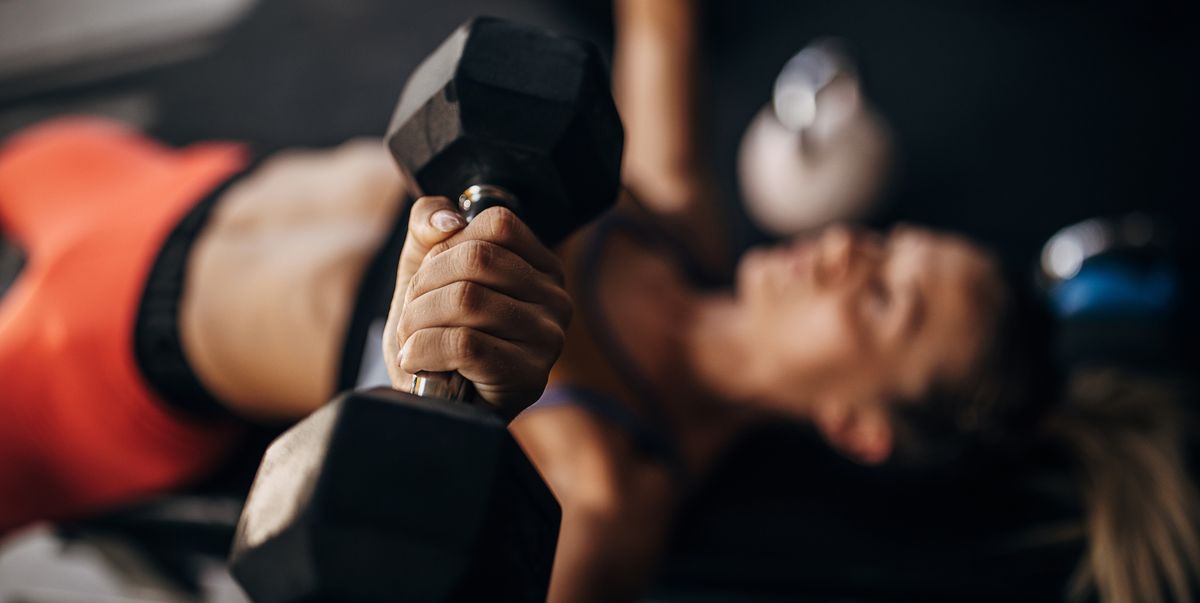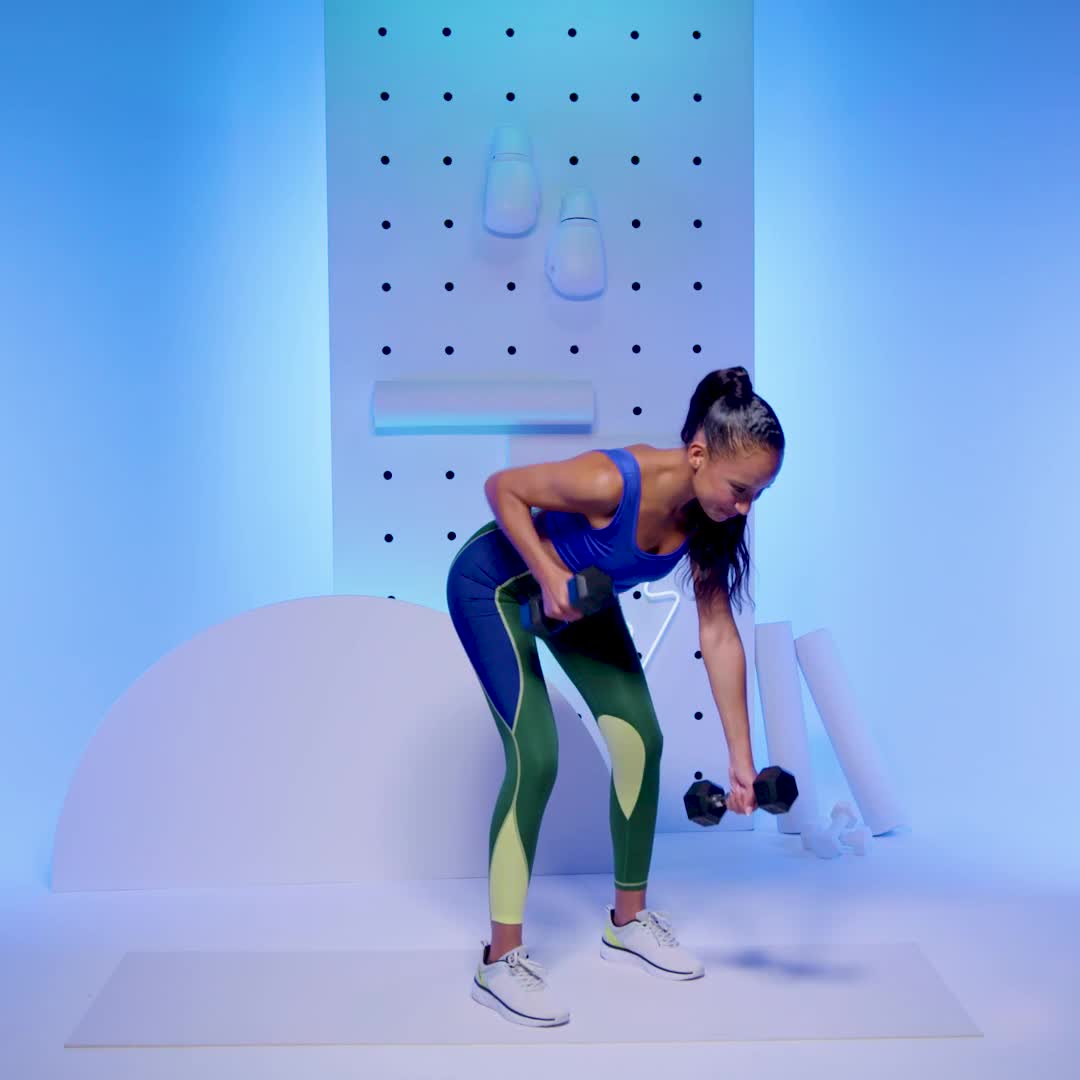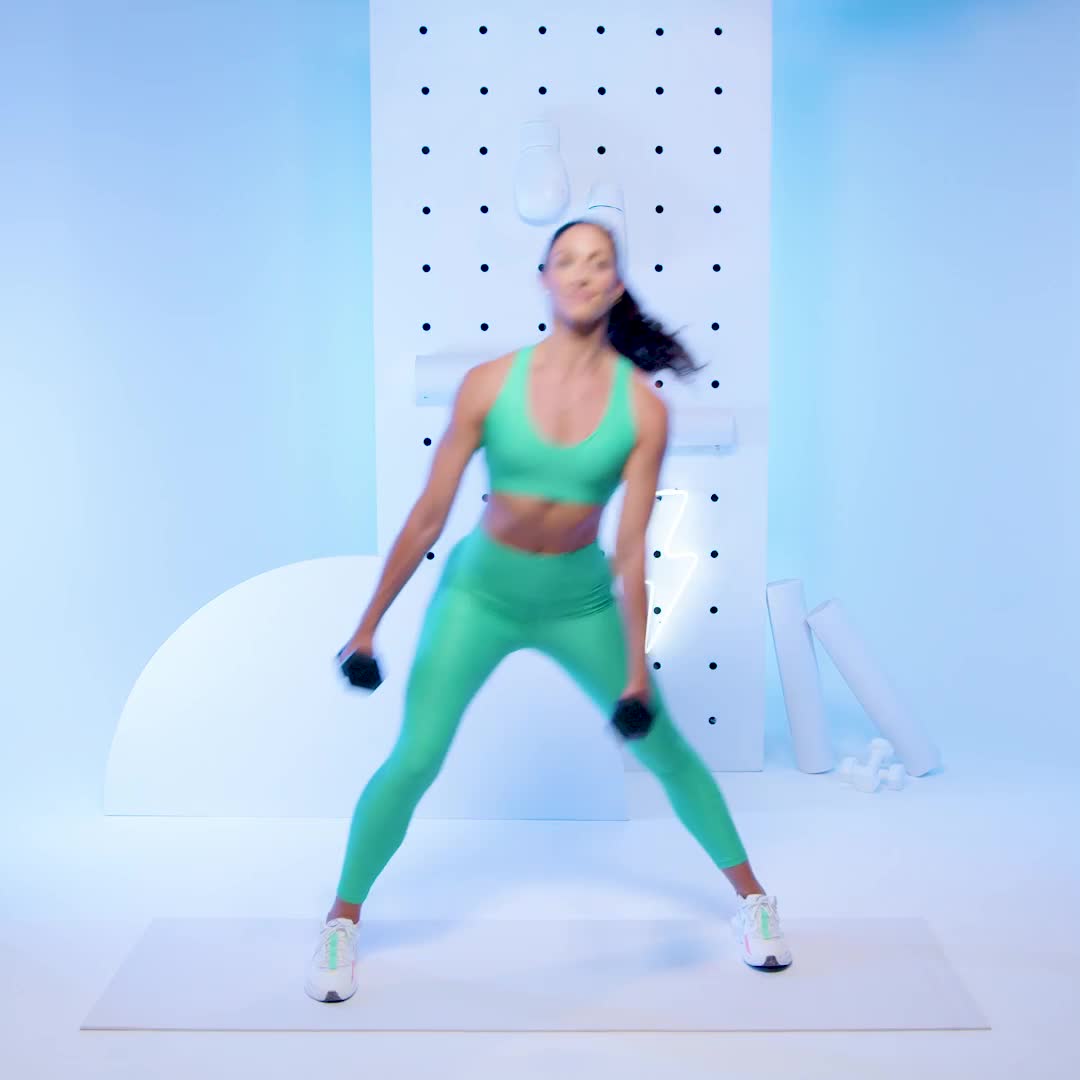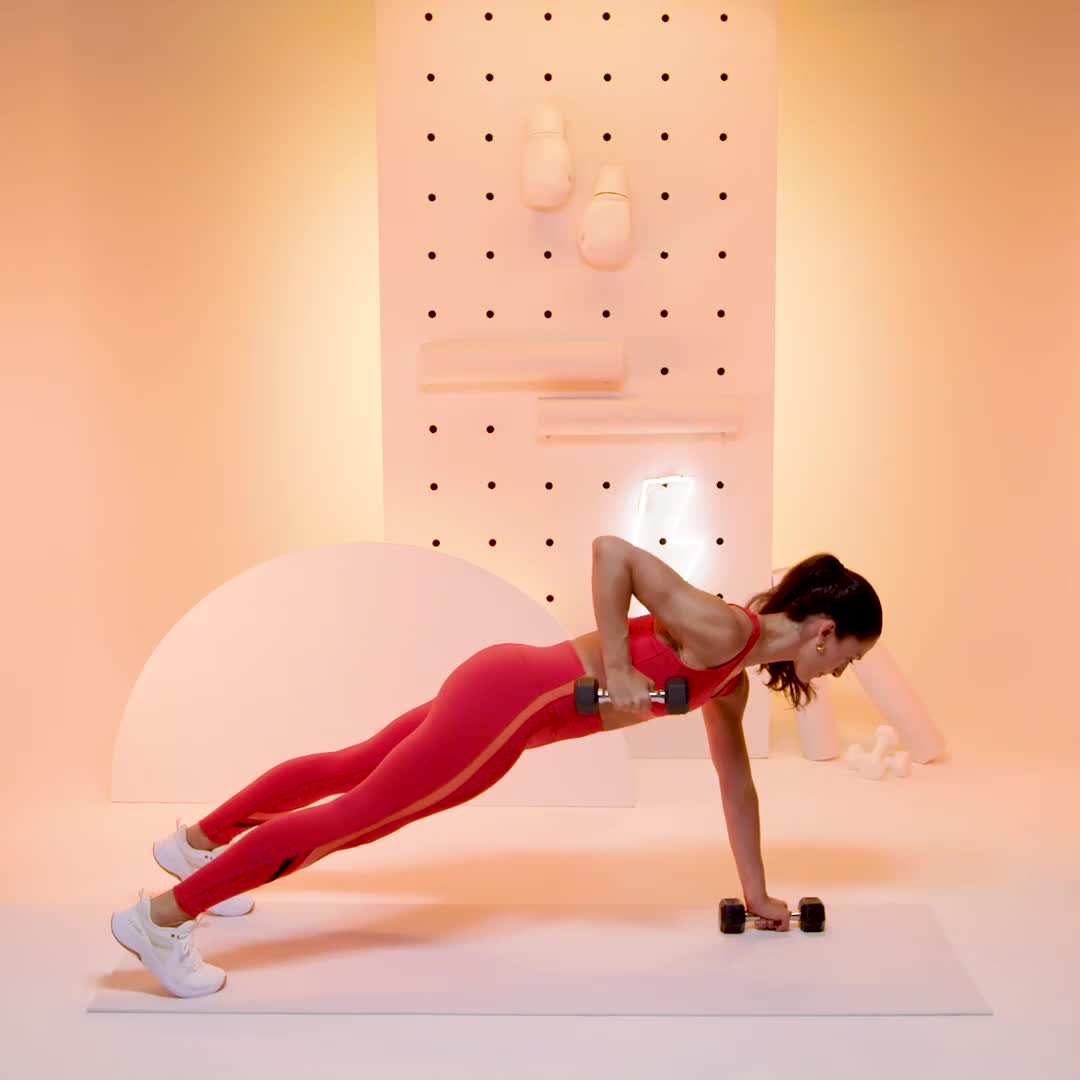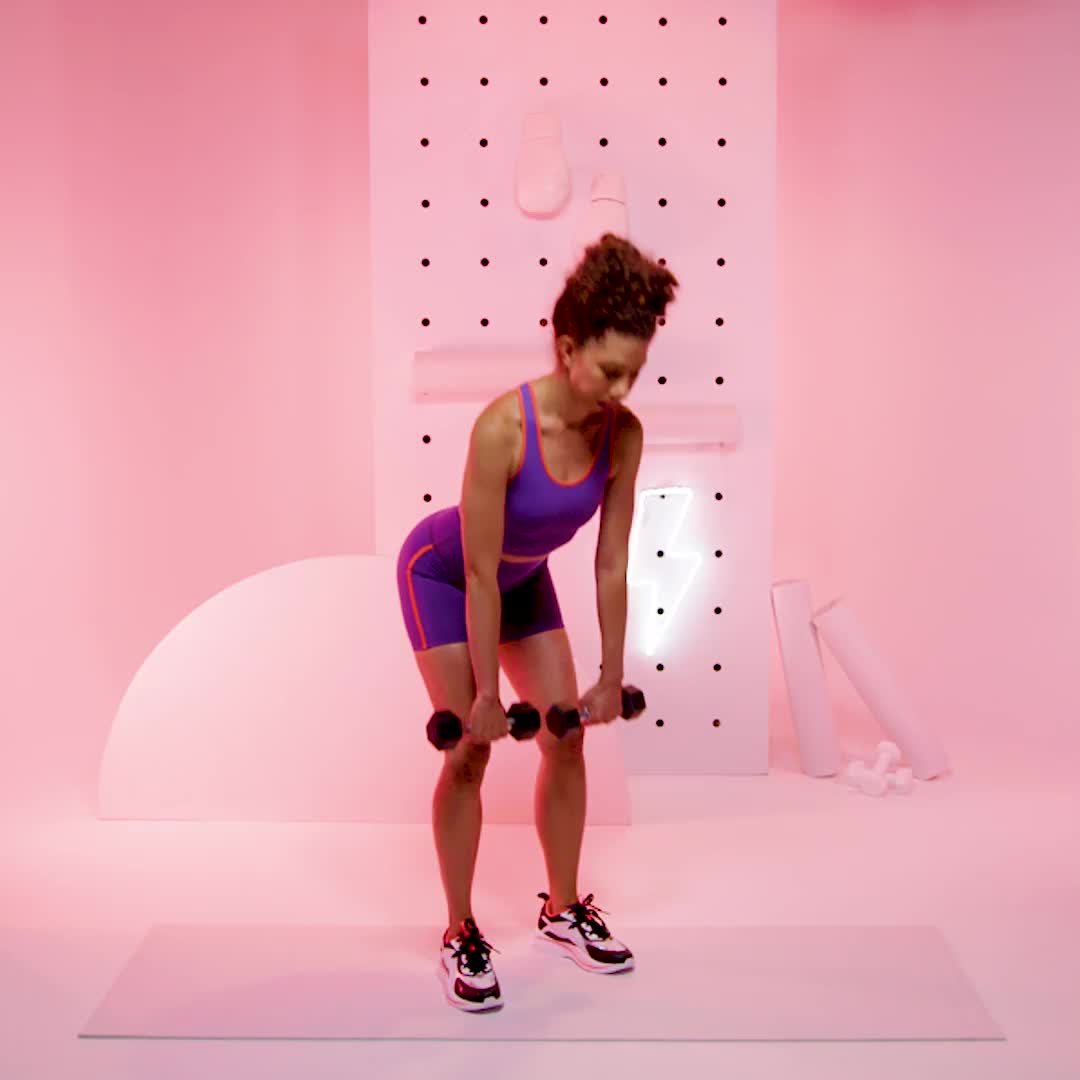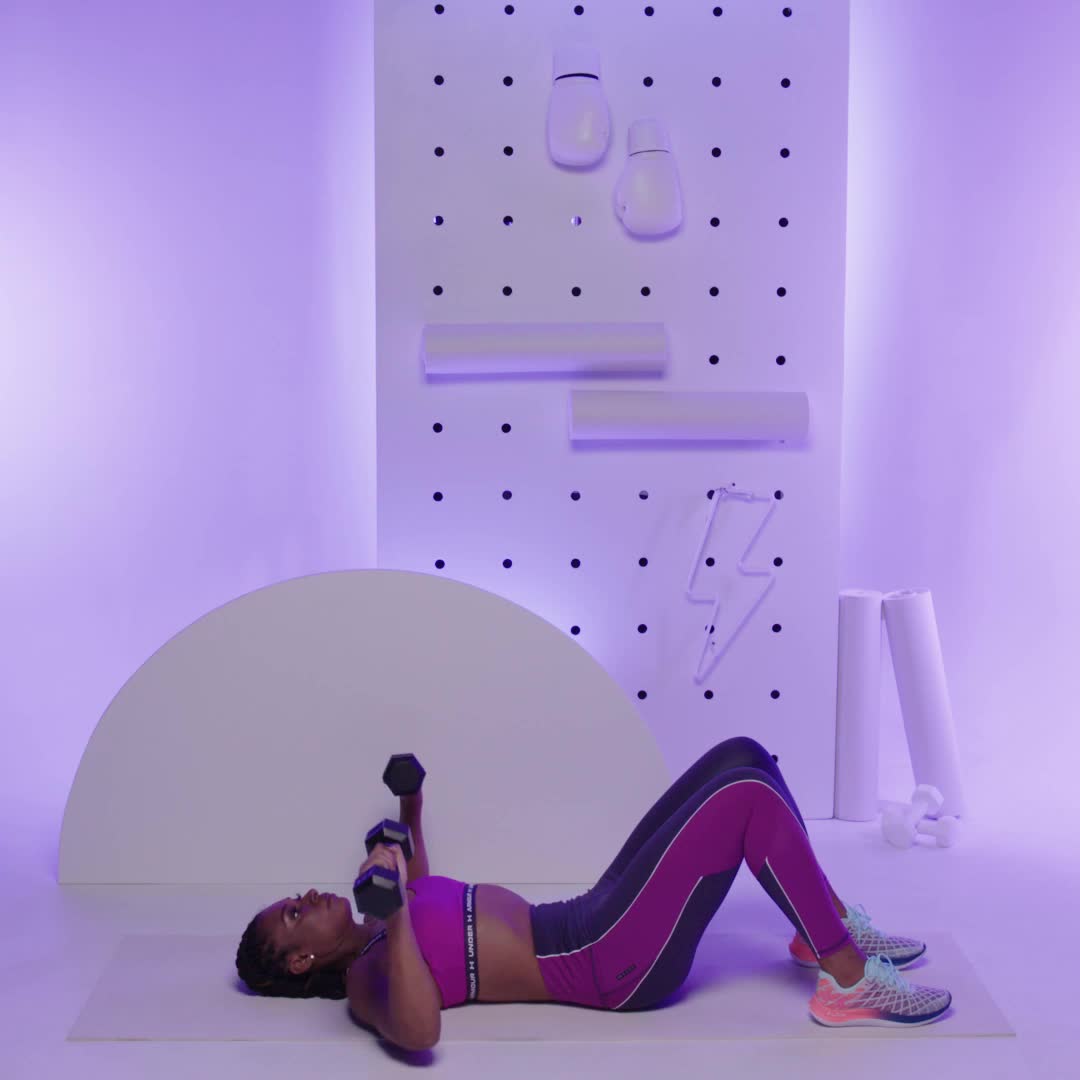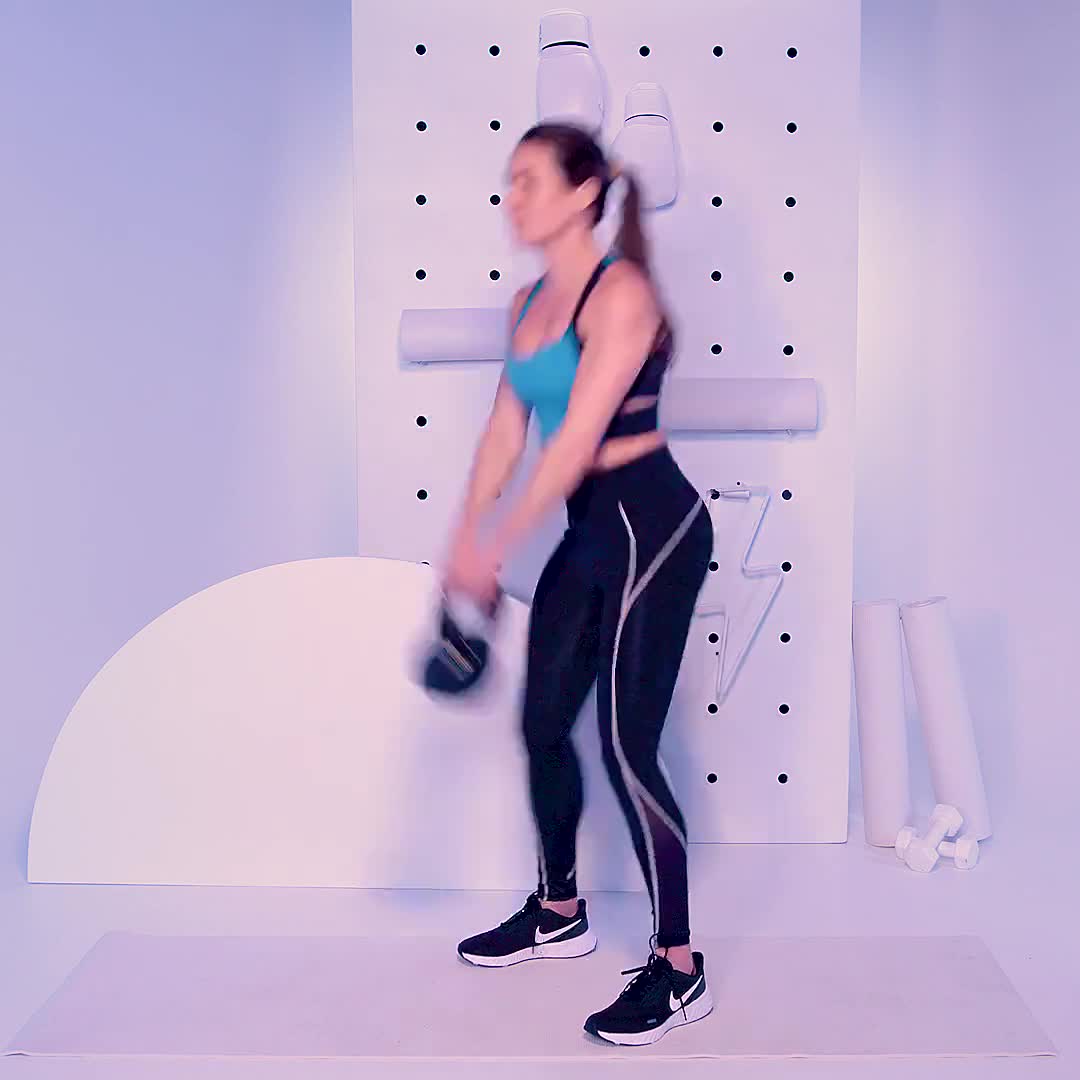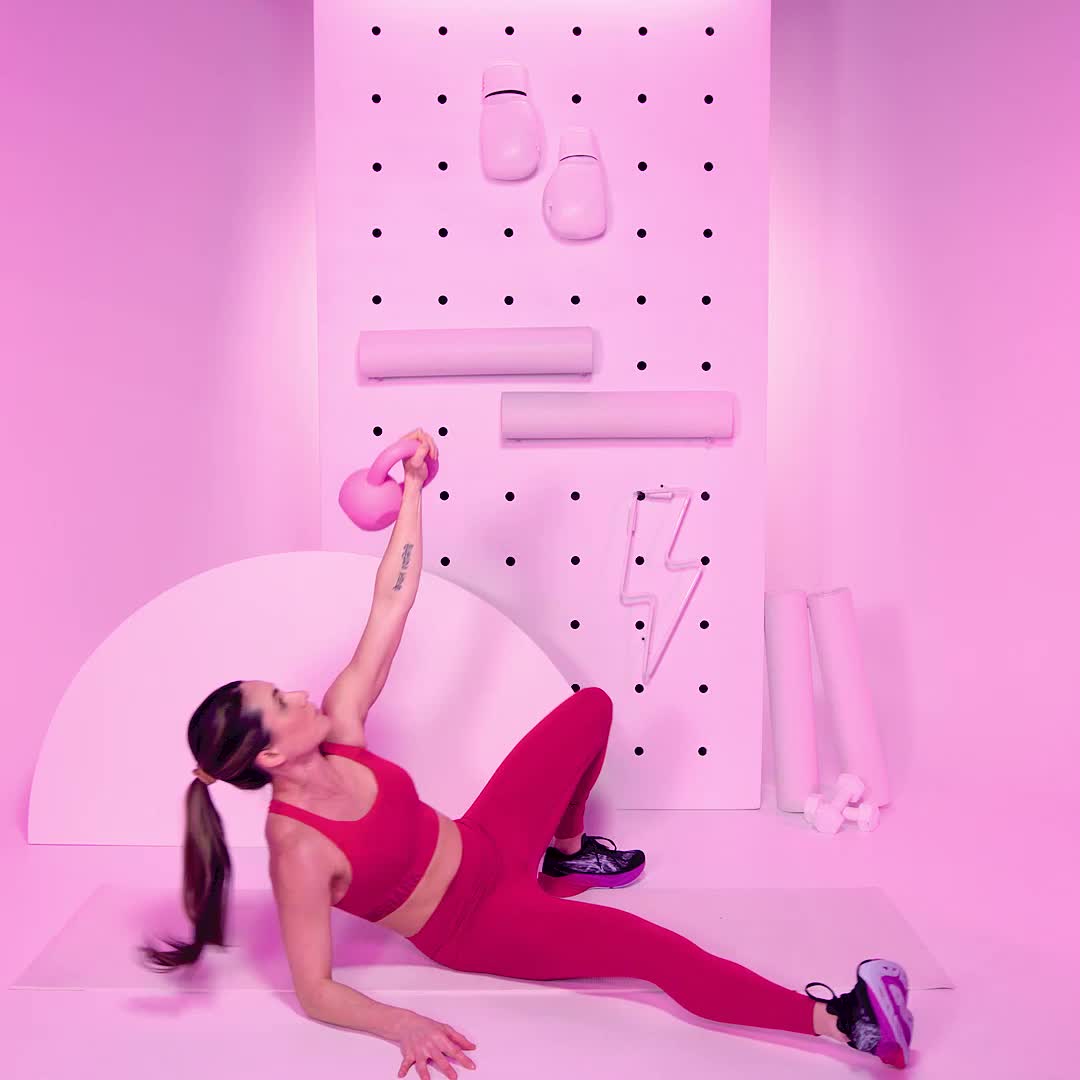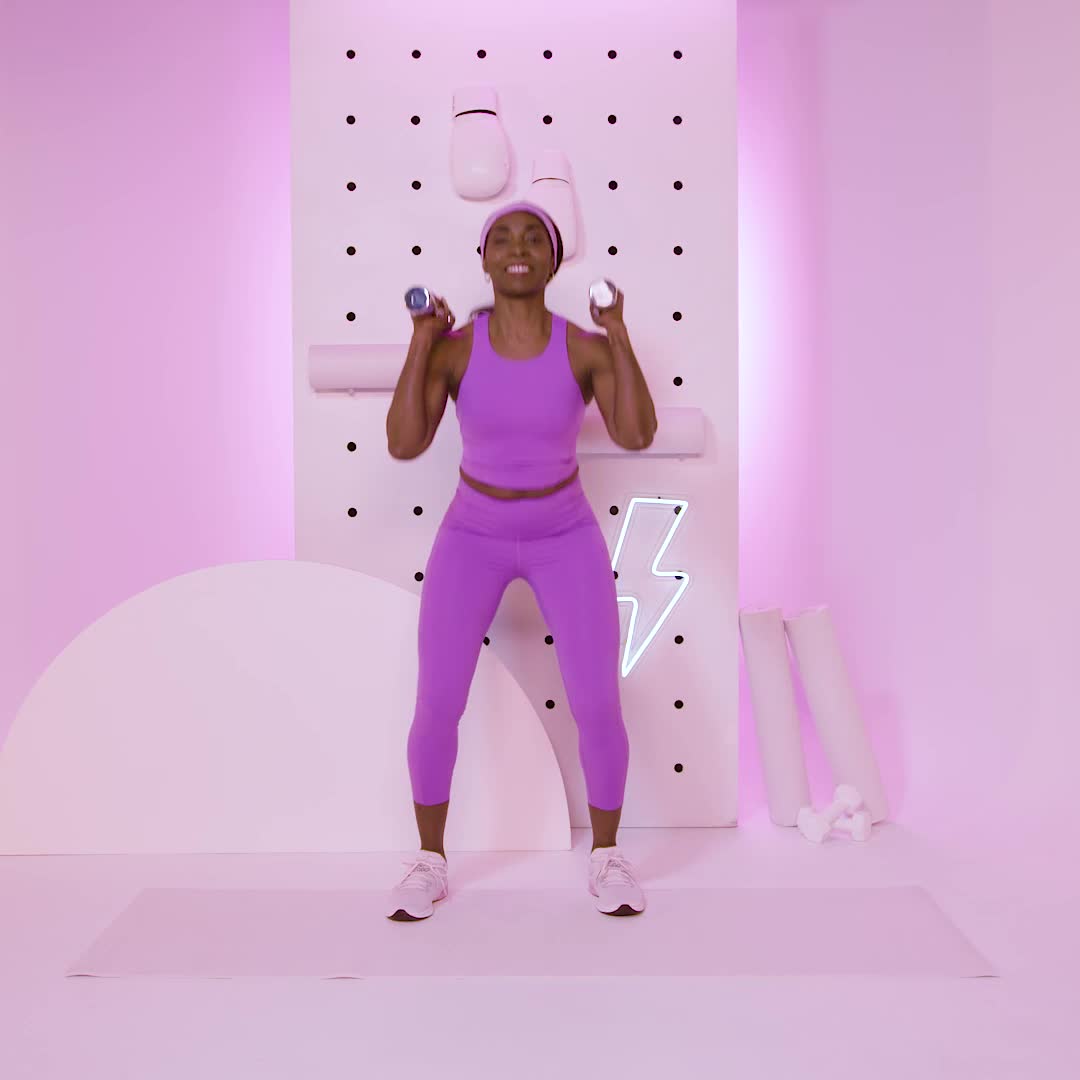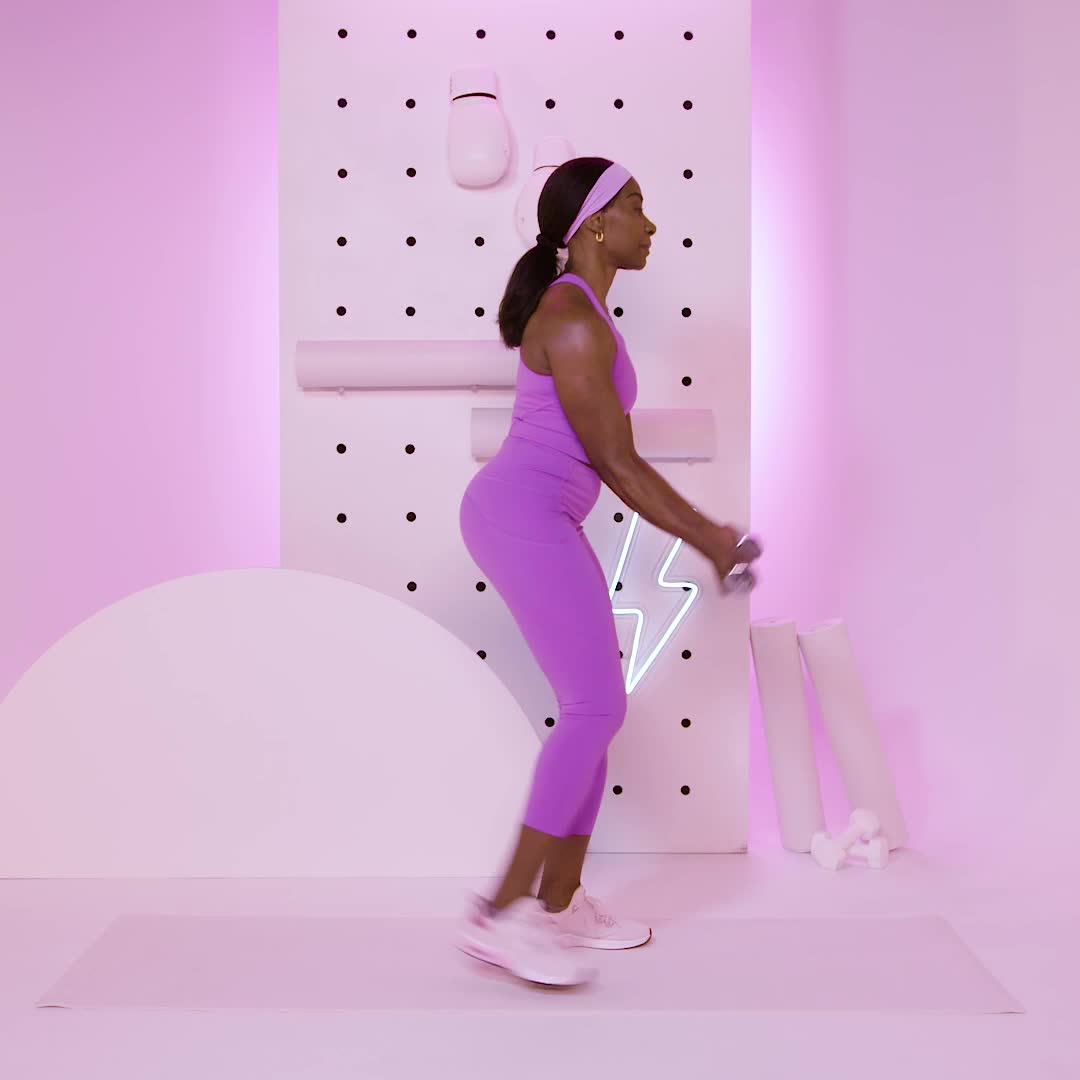Remember all those sketchy years during which women were told to shy away from weights? Now, finally, the tides are turning in a major way, with the fitness and health industries not only celebrating, but also encouraging, women adding resistance training to their routines for the endless mind and body benefits. One of the clearest upsides of weight training for women lies in the powerful way it increases metabolism and kicks weight loss into high gear.
“Strength training improves body composition by reducing body fat while maintaining or increasing lean muscle mass,” says sports dietitian Tiffany Ma, RDN. “It also supports long-term weight management by enhancing your metabolic rate and physical function, making it easier to stay active.” Basically, taking up a lifting habit can help you to get stronger and even give your metabolism a boost, allowing you to burn calories more efficiently in the future.
You don’t need to spent years pumping iron to see results, either: Research has shown that a six-week strength training program can help you lose body fat and gain muscle.
Of course, weight loss is complicated, and consistent strength training paired with a well-balanced diet and other healthy lifestyle habits will ultimately lasting impact when it comes to weight loss.
If you’ve never done a formal strength training program in the past, it’s understandable to have questions about how weight training for weight loss works, and what a solid schedule looksl ike. Here’s how experts recommend incorporating weight training into your routine if weight loss is your goal.
Meet the experts: Kerry Ann Madden, NASM-CPT, is the owner of KAM Fitness and Nutrition. Stacy Sims, PhD, is an exercise physiologist and senior research associate at SPRINZ-AUT University. Alex Silver-Fagan, CPT, RYT, is a Nike master trainer. Tiffany Ma, RDN, CSSD, is a sports dietitian and former competitive powerlifter based in New York City.
Why Weight Training For Weight Loss Works
In addition to helping you build muscle, weight training can help with fat loss, especially if you’re using free weights (think: dumbbells, kettlebells, and barbells) and engaging in circuit training, says Kerry Ann Madden, NASM-CPT, owner of KAM Fitness and Nutrition. So, if you like to stay active and want to enhance your results, it may help to mix up your existing workout routine with exercises that will help you build strength (more on that soon).
In the past, you may have heard that cardio and calorie restriction can help you lose weight quickly, but this isn’t necessarily true. Why? First, instances of increased stress—from, say, cardio-heavy workouts—can cause your body’s cortisol levels (the stress hormone that regulates your metabolism) to skyrocket. Stress and obesity are interrelated, per research in the International Journal of Preventive Medicine, and being on a strict diet may expose a person to stress and therefore increase cortisol levels even more, per a study in the Journal of Nutrition and Food Security. Because cortisol helps regulate your metabolism, engaging in activity that regularly spikes your cortisol may not be best if you’re trying to lose weight.
“With resistance training, you’re actually building muscle tissue, and it’s not quite as taxing—so you don’t get that cortisol bump,” says exercise physiologist Stacy Sims, PhD. Lifting weights also makes your muscles more efficient overall, she says. That said, you don’t necessarily need to abandon cardio altogether since it can still support weight loss. You don’t need to put pressure on yourself to focus on exclusively cardio or overdo it—getting 150 minutes of moderate intensity activity per week (even brisk walking) is enough.
You may not notice significant weight loss when you first start lifting weights. “You’ll start noticing a change in your clothes, you’ll start feeling fitter, you’ll start looking toner—but the weight on the scale might not change,” Sims says. This is because your body composition is changing—you’re losing fat while building muscle mass, and muscles are incredibly dense. So if the number on the scale doesn’t change right away, don’t give up on your workout routine—it may just take some time to see a shift, she says.
Weight Training For Weight Loss Tips
Assess your mobility.
Before you pick up any weights, it’s a good idea to understand what your body’s mobility and stability looks like, according to Alex Silver-Fagan, CPT, RYT, a Nike master trainer and the creator of Flow Into Strong. Try hanging on a bar, holding a plank, or sitting in a squat. “If you can’t hold your body in those places, I wouldn’t add load to those movements,” she says. Keep working at these exercises with your body weight until you feel more in control, she says.
Master the basics.
There are four functional moves you should be able to conquer before starting your weight training routine: a squat, push-up, deadlift, and horizontal or overhead row, says Silver-Fagan. Having these under your belt will help prevent injuries in the future. Not sure how your form stacks up? Consider working with a trainer for even just a few sessions (virtual or IRL) for feedback and guidance.
Use different types of weights.
To start, find three sets of dumbbells: a light, medium, and heavy pair, says Silver-Fagan. You should be able to easily lift the lightest ones with little to no effort, while the heavy ones should be tougher. (Sometimes, even your own body weight can be enough, she adds, so start where you’re most comfortable.)
If you aren’t sure how light or heavy your weights should be when you’re first starting out, choose one that feels “medium-light” to you and perform 12 reps of foundational movements: squats, presses, rows, lunges, and deadlifts, says Madden. “Next, ask yourself, ‘Could I have done more than 12’? If yes, that weight is a great starting point for stabilization endurance training,” she says.
Alternate strength and cardio.
If you’re not currently exercising or have been taking a break for a while, you should start with one day of strength training and another of cardio, says Madden. “Exercise will create positive changes in your body that may take four to six weeks to feel,” Madden says. “From there, you can increase to three days of weight training and four days of cardio if your body is loving it. Learning your perfect plan is part of the fun!”
Eat plenty of protein.
Eating enough protein is important for muscle growth and repair, and also helps you feel fuller longer, which could help you lose weight in the long run, says Ma.
The current (bare minimum!) recommendation is 0.35 grams of protein per pound of body weight every day if you’re sedentary, per The Academy of Nutrition and Dietetics—however, it’s likely that you need much more, especially when incorporating strength training into your routine. If you’re active and looking to build muscle and lower your body fat percentage, aim for more like 0.73 to 1 grams of protein per pound of body weight, per the National Academy of Sports Medicine. For most of us, that’s about 30 to 35 grams of protein per meal.
Listen to your body.
Pay attention to how you’re feeling while lifting weights. “There’s a difference between pain and discomfort,” Silver-Fagan notes. “If something is painful, then you should be backing off. If something’s uncomfortable, you have to ask yourself, ‘Is this because I haven’t done it? Is it hard?’ ”
Remember that you can always take a break in between reps, and it’s important to prioritize rest and recovery, too. “Ensure you get enough sleep, manage stress, and allow your muscles to recover properly between workouts,” Ma says.
Weight Training For Weight Loss Sample Plan
These three workouts are easy to fit into your current fitness routine.
Equipment: Hand weights or dumbbells
Best for: Total-body strength
Instructions: Do each of these three workouts once a week for four weeks. Each new week, try to either use a heavier weight or do more reps, Silver-Fagan suggests. Combine with one to two cardio days (jogging, walking, rower, cycling, Tabata, HIIT—whatever you enjoy that gets your heart rate up!), one to two yoga days, and a rest day for the best results. She also recommends warming up by moving through the exercises without weights first.
- Monday: Workout 1
- Tuesday: Cardio
- Wednesday: Workout 2
- Thursday: Cardio or yoga (choose one)
- Friday: Cardio or yoga (choose one)
- Saturday: Workout 3
- Sunday: Rest
Workout 1
Complete five sets total of these two exercises.
Goblet Squat
How to:
- Stand with feet hip-width apart and hold a weight vertically in front of chest, elbows pointing toward the floor.
- Push hips back and bend knees to lower into a squat.
- Drive through heels to stand back up to starting position. That’s 1 rep. Complete three to five reps with a heavy weight.
Bent-Over Row
How to:
- With a dumbbell in each hand and feet under hips, hinge at hips with knees slightly bent and arms just in front of legs.
- Drive one elbow back toward hips, feeling shoulder blades squeeze together, pulling weight toward side body.
- Slowly lower weight back down, then repeat with other arm. That’s 1 rep. Complete three to five reps with a medium-heavy weight.
Complete four sets total of the following three exercises.
Lateral Lunge
How to:
- Holding a weight at chest or dumbbells at each side, stand up straight with feet hip-width apart.
- Take a large step to the right, sit hips back, and lower down until right knee is nearly parallel with the floor. Your left leg should be straight.
- Return to start. That’s 1 rep. Complete 10 reps on each side.
Renegade Row
How to:
- Place two dumbbells on the floor shoulder width apart. Assume a plank position with feet wider than shoulder-distance apart. Grasp the dumbbells so hands are elevated off the floor, maintaining a neutral wrist position.
- Drive left arm through the dumbbell into the floor, brace entire body, and row the right dumbbell up and to the side of rib cage—your elbow should be pointed up and back.
- Keep your body stable as you slowly lower the dumbbell back to the floor. Then repeat on the other side. That’s 1 rep. Complete 12 alternating reps with a medium weight.
Russian Twist
How to:
- Sit on floor with legs together out in front of you, knees bent. Hold a dumbbell or medicine ball for added challenge. Lean back slightly so your torso and legs form a V-like shape, bracing abdominals.
- Twist torso from one side, then the other, without moving legs. That’s 1 rep. Complete 16 reps.
Workout 2
Complete five sets total of the next two exercises.
Deadlift
How to:
- Stand with feet shoulder-distance apart, with a dumbbell in each hand.
- Hinge at hips and lower torso, with a slight bend in knees, until torso is parallel to floor (or as far as you can without your spine rounding). Keep spine neutral by looking forward, not up.
- Keep shoulders back and engage glutes and core as you drive through lower body to stand up straight. That’s 1 rep.
- Pause for a moment at the top, then slowly lower back down into next rep. Complete three to five reps with a heavy weight.
Chest Press
How to:
- Lie flat on back, or on a bench, with feet flat on the ground. With a dumbbell in each hand, extend arms directly over shoulders, palms facing toward feet.
- Squeeze shoulder blades together and slowly bend elbows, lowering the weights out to the side, parallel with shoulders, until elbows form 90-degree angles.
- Slowly drive the dumbbells back up to start, squeezing shoulder blades the entire time. That’s 1 rep. Complete three to five reps with a medium-heavy weight.
Complete four sets total of the next three exercises.
Kettlebell Swing
How to:
- Hold a kettlebell with both hands using an overhand grip and stand with feet hip-width apart. Push hips back, knees slightly bent, and lower butt and chest and bring the weight slightly in front of feet.
- Keeping core tight, lift pull the kettlebell slightly back between your legs, then drive hips forward to accelerate the kettlebell up to shoulder height.
- Reverse the movement, lowering the weight back between your legs. That’s 1 rep. Complete 10 reps.
Split Stance Shoulder Press
How to:
- Grab a pair of dumbbells or a resistance band. Stagger stance into a wide step, one foot forward and one back with hips squared, and hold the weights or band just above shoulders, elbows close to sides.
- Leaning forward ever so slightly, bend both knees, and press through front heel while simultaneously lifting the weights or band to the sky, keeping elbows forward and arms in line with your ears.
- Lower weights or band back to shoulders. That’s 1 rep. Do 10 reps, alternating side for each set.
Turkish Get Up
How to:
- Lie face-up with kettlebell in left hand resting in front of shoulder. Bend left leg, placing foot flat on floor. Stretch out right arm and leg to the side at a 45-degree angle.
- Get a good grip on handle and press weight up toward ceiling, locking out elbow completely and keeping gaze on kettlebell.
- With eyes still on bell overhead, rise onto right forearm, then push into palm of right hand to sit up straight. Engage abs, then push through left heel and squeeze glutes to lift hips and step right leg behind into lunge, so right knee is down and left thigh is parallel to floor. (Note: You can stop at this step to modify the move.)
- Brace core and drive through glutes to stand if you can.
- Reverse the steps until you are lying on the floor again. That’s 1 rep. Complete five reps with a medium weight on each side.
Workout 3
Complete three sets total of the next two exercises.
Single-Leg Deadlift
How to:
- Stand with both feet under hips. Shift weight to right leg, which should be straight with a soft bend in the knee.
- Begin to drive left foot back like you’re stamping the bottom of your foot on the wall behind you, keeping leg straight. Simultaneously, slowly start hinging at the waist, tipping torso forward until it’s almost parallel to the floor. Keep your arms straight, at shoulder height, and perpendicular to the floor.
- At the bottom of the position, your body should be in a straight line from the top of head to the bottom of left foot.
- Then, begin pulling left leg forward while keeping it straight, and lift your torso up until you’re standing again.That’s 1 rep. Complete 10 reps.
Kneeling Chest Press To Tricep Extension
How to:
- Start kneeling with knees slightly wider than hip-distance apart.
- Hold a dumbbell in both hands and extend arms straight out in front of chest.
- Bend at elbows to pull dumbbell toward chest, then press arms back out to straight.
- Next, raise the dumbbell up overhead, and bend at elbows to lower weight behind head.
- Finally, extend elbows to press dumbbell back up overhead and reverse the movement to return to starting position. That’s 1 rep. Complete 12 reps with a medium weight.
Complete four sets total of the next three exercises.
Squat To Overhead Press With Rotation
How to:
- Start standing with feet shoulder-width apart and engage core. Rack weights at shoulders.
- Lower into a squat.
- Once you’ve lowered as your mobility will allow (ideally, thighs will be parallel to the floor), drive through heels to return to standing.
- As you come up, push the weights overhead, keeping your knees soft, and rotate torso simultaneously.
- That’s 1 rep. Complete ten reps, alternating the direction you twist each time, with a medium weight.
Alternating Reverse Lunge To Bicep Curl
How to:
- Grab a pair of dumbbells and hold them at arm’s length next to sides, palms facing each other. Stand tall with feet hip-width apart.
- Step backward with right leg and lower body until front knee is bent 90 degrees. At the same time as you lunge, curl both dumbbells up to shoulders.
- Lower the dumbbells as you return to the starting position. Step back with the other leg and repeat. That’s 1 rep. Complete 12 reps with a medium weight.
Rainbow Slam
How to:
- Start in a lunge with both knees at 90-degree angles. Hold a dumbbell or medicine ball in both hands.
- Rotate upper body slightly and extend arms so you’re holding weight toward one side of body. Forcefully, but with control, swing the weight over head in an arch or rainbow shape, until you reach the same position on the opposite side of body.
- Bring weight back to starting position. That’s 1 rep. Complete 16 reps with a medium weight on one side, then switch.
Korin Miller is a freelance writer specializing in general wellness, sexual health and relationships, and lifestyle trends, with work appearing in Men’s Health, Women’s Health, Self, Glamour, and more. She has a master’s degree from American University, lives by the beach, and hopes to own a teacup pig and taco truck one day.

Emily Shiffer is a freelance health and wellness writer living in Pennsylvania.
Read the full article here


